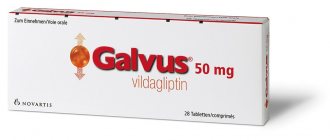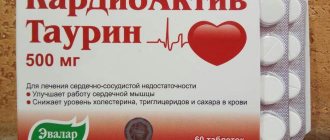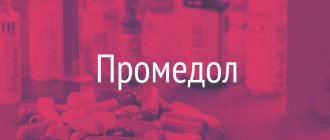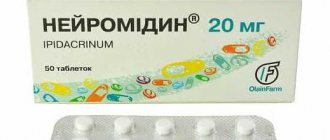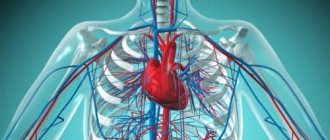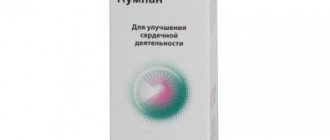Release form and composition
Dosage form – film-coated tablets: round, convex on both sides, almost white or white; on the fracture - from white to white-grayish color (10 pcs. in a blister, 4 blisters in a cardboard pack; 20 pcs. in a blister, 2 blisters in a cardboard pack).
Active ingredients in 1 tablet:
- metformin hydrochloride – 400 mg;
- glibenclamide – 2.5 mg.
Additional components: diethyl phthalate, croscarmellose sodium, glycerol, gelatin, corn starch, cellacephate, purified talc, colloidal silicon dioxide, sodium carboxymethyl starch, microcrystalline cellulose, magnesium stearate.
Features of pharmacokinetics
After entering the stomach, glibenclamide is absorbed by 84%.
It reaches Cmax (peak level) after 1-2 hours. Volume distribution (Vd) is 9-10 l. The substance is 95% bound to blood proteins. The component is transformed in the liver with the release of 2 neutral metabolites. One of them eliminates the intestines, the second – the kidneys. The half-life T1/2 is within 3-16 hours.
After entering the digestive system, metformin is actively absorbed; no more than 30% of the dose remains in the feces. The bioavailability of biguanide does not exceed 60%. With parallel intake of nutrients, the absorption of the drug slows down. It is distributed quickly and does not interact with plasma proteins.
The drug is practically not metabolized, waste material is eliminated by the kidneys, the half-life T1/2 is from 9 to 12 hours.
Contraindications
- hypoglycemia;
- diabetic ketoacidosis, diabetic precoma and coma;
- type 1 diabetes mellitus;
- acute conditions that can lead to changes in kidney function (dehydration, severe infection, shock);
- severe renal dysfunction;
- liver failure;
- acute and chronic diseases accompanied by tissue hypoxia (for example, recent myocardial infarction, respiratory or heart failure, shock);
- extensive burns, injuries, major surgical interventions, infectious diseases and other conditions requiring insulin therapy;
- porphyria;
- lactic acidosis (including a history);
- chronic alcoholism or acute alcohol intoxication;
- simultaneous use of miconazole;
- following a hypocaloric diet (less than 1000 cal/day);
- conducting a radioisotope or x-ray examination with the introduction of an iodine-containing contrast agent (within 48 hours before and 48 hours after);
- period of pregnancy and breastfeeding;
- hypersensitivity to any component of the drug or other sulfonylurea derivatives.
Gluconorm is not recommended for use in patients over 60 years of age who perform heavy physical work.
Caution during treatment is required in the following cases:
- diseases of the thyroid gland, accompanied by a violation of its function;
- hypofunction of the anterior pituitary gland;
- adrenal insufficiency;
- febrile syndrome.
Reviews from diabetics
Reviews from diabetics about Gluconorm are often contradictory. Some argue that the drug does not help, there are many side surprises, including weight gain. Others say that the main difficulty in treatment with the drug was selecting the dosage, and then the sugar returned to normal. There are positive reviews about the herbal tea “Altai 11 Gluconorm with blueberries”: it helps maintain vision and improves well-being.
Evgenia Fedorovna, Voskresensk “I have been suffering from diabetes for 7 years, I have tested a lot of medications on myself. Gluconorm was among them. I took 2 tablets, morning and evening. Sugar control, but I’m tired of dealing with side effects. I try to follow the diet, but my stomach upsets and headaches did not go away within a month. The doctor said that these are features of my age and body, and prescribed the original drug Glucophage. I take 2 tablets a day and felt the results already in the first week. Strength has appeared, there is no brutal appetite and no fear of going out.”
Vladimir, Saratov “During a medical examination, my tests accidentally revealed elevated sugar levels, and recently I have also noticeably gained weight. I am a driver, my job is sedentary, and the road today is constant stress. The therapist called this condition prediabetes and prescribed Gluconorm one tablet a day, which I drink with food. In 2 weeks I’m going back to the appointment, I hope that everything will work out, although the doctor said that if I don’t lose weight and stick to a diet, then there’s no chance of normal sugar levels. It’s hard to get used to new conditions, but the prospect of disability makes you think.”
Gluconorm is an easy-to-use drug with basic components proven in research and clinical practice. Biguanides and sulfonylurea derivatives have been used to treat type 2 diabetes for more than half a century, and new types of antidiabetic drugs have not yet claimed their authority.
Directions for use and dosage
Gluconorm is indicated for oral use. The tablets must be taken during meals.
An adequate dose for each patient is selected individually based on blood glucose levels.
The initial dose is usually 1 tablet once a day. If necessary, the dose is increased every 1–2 weeks until the desired effect is achieved.
If Gluconorm is prescribed instead of a combination of two drugs - metformin and glibenclamide - the dose is determined depending on the previous doses of each component, usually 1-2 tablets are prescribed.
The maximum permissible dose is 5 tablets per day.
Pharmacological characteristics
Gluconorm is a combination medication that combines drugs from pharmacological classes with different mechanisms of action.
The first basic component of the formula is metformin, a representative of biguanides, which normalizes glycemic indicators by improving cell resistance to their own insulin and accelerating the utilization of glucose by tissues. In addition, biguanide inhibits the absorption of carbohydrates and blocks the production of glucose in the liver. Improves metformin and fat balance by maintaining optimal concentrations of all types of cholesterol and triglycerol.
Glibenclamide, the second active ingredient in the drug formulation, as a member of the second generation sulfonylurea class, enhances the production of insulin by the β-cells of the pancreas responsible for this process. It protects them from aggressive glucose, improves insulin resistance and the quality of cellular binding. Released insulin actively affects the absorption of glucose by the liver and muscles, therefore, its reserve is not formed in the fat layer. The substance acts in the 2nd phase of insulin production.
Side effects
- from the hematopoietic system: rarely - erythrocytopenia, leukopenia, thrombocytopenia; very rarely - hemolytic or megaloblastic anemia, agranulocytosis, pancytopenia;
- from the side of metabolism: lactic acidosis;
- from the gastrointestinal tract and liver: rarely - metallic taste in the mouth, abdominal pain, nausea, loss of appetite, vomiting; in some cases - increased activity of liver enzymes, cholestatic jaundice, hepatitis;
- from carbohydrate metabolism: hypoglycemia is possible;
- from the central nervous system: increased fatigue, dizziness, headache, weakness; rarely – sensory disturbances, paresis;
- dermatological, allergic and immunopathological reactions: rarely - photosensitivity, increased body temperature, itching, arthralgia, erythema, proteinuria, urticaria;
- other: acute reaction of alcohol intolerance (disulfiram-like reaction) after taking it, expressed by complications from the circulatory and respiratory organs (feeling of heat in the face and upper body, headache, dizziness, vomiting, tachycardia).
Help with overdoses
The presence of metformin in the formulation often provokes intestinal disorders, and sometimes lactic acidosis. If there are symptoms of complications (muscle spasms, weakness, pain in the epigastric region, vomiting), stop taking the medication. With lactic acidosis, the victim needs urgent hospitalization. It is restored using hemodialysis.
The presence of glibenclamide in the formula does not exclude the development of hypoglycemia. A dangerous condition can be recognized by uncontrolled appetite, increased sweating, tachycardia, tremor, pale skin, isomnia, paresthesia, dizziness and headache, and anxiety. For mild hypoglycemia, if the victim is not unconscious, he is given glucose or sugar. In case of fainting, glucose, dextrose, glucagon (40% solution) are administered intravenously, intramuscularly or subcutaneously. After the patient has regained consciousness, he is fed foods with fast carbohydrates, since relapses in this state occur frequently.
special instructions
During therapy, blood glucose levels on an empty stomach and after meals should be kept under control.
During fasting, in the case of simultaneous use of non-steroidal anti-inflammatory drugs and ethanol, the risk of hypoglycemia increases.
When changing the diet, physical and emotional stress, correction of the dosage regimen is required.
Taking Gluconorm must be stopped 48 hours before surgery or intravenous administration of a radiocontrast agent; it can be resumed no earlier than 48 hours after the intervention/study.
During the treatment period, you should not drink alcohol; it is recommended to be careful when driving a car and performing potentially dangerous work that requires quick reactions and increased attention.
Indications for use of Gluconorm
For many patients with diabetes, one drug is not able to stably keep glucose levels within normal limits, so doctors often resort to combination treatment. The indication for its use is glycated hemoglobin above 6.5-7%. The most rational combinations of metformin with sulfonylurea derivatives (SUDs), gliptins and incretin mimetics are considered. All these combinations immediately affect both insulin resistance and the volume of insulin production, and therefore provide the best effect.
The combination of metformin + sulfonylurea is the most common. The substances are not able to interact with each other and do not reduce effectiveness. Glibenclamide is the most powerful and studied of all PSMs. It has a low price and is sold in every pharmacy, so in combination with metformin, glibenclamide is prescribed more often than other drugs. For ease of use, two-component tablets with these two active ingredients have been created - Gluconorm and its analogues.
According to the instructions, Gluconorm is used exclusively for type 2 diabetes, if nutritional correction, sports and metformin do not ensure a drop in glucose to target values. The dose of metformin should be no less than optimal (2000 mg) or normally tolerated by a diabetic. Gluconorm can also be taken by patients who previously took glibenclamide and metformin separately.
Research has established that the fewer tablets a patient takes per day, the more inclined he is to comply with all the doctor’s prescriptions, which means the higher the effectiveness of treatment. That is, taking Gluconorm instead of two tablets is a small step towards better compensation for diabetes.
In addition, doubling the dosage of glucose-lowering tablets does not provide the same reduction in sugar. That is, two drugs in a small dose will work more effectively and have fewer side effects than one drug in a maximum dosage.
Drug interactions
Cationic drugs secreted in the tubules (ranitidine, quinidine, procainamide, digoxin, triamterene, morphine, vancomycin, amiloride, quinine), with long-term use, can increase the maximum concentration of metformin by 60%.
Metformin reduces the half-life and maximum concentration of furosemide by 42.3 and 31%, respectively.
Nifedipine increases absorption and slows down the excretion of metformin, furosemide increases its maximum concentration (by 22%).
If you drink alcohol during treatment, the risk of developing lactic acidosis increases.
Medicines that acidify urine (ascorbic acid in high doses, ammonium chloride and calcium chloride) enhance the effect of glibenclamide.
The hypoglycemic effect of Gluconorm is enhanced by the following drugs: tubular secretion blockers, salicylates, histamine H2 receptor blockers (cimetidine), anabolic steroids, monoamine oxidase inhibitors, antifungals (miconazole, fluconazole), coumarin anticoagulants, angiotensin-converting enzyme inhibitors (captopril, enalapril) , long-acting sulfonamides, antituberculosis drugs (ethionamide), fibrates (clofibrate, bezafibrate), beta-blockers, non-steroidal anti-inflammatory drugs (phenylbutazone, azapropazone, oxyphenbutazone), other hypoglycemic drugs (acarbose, biguanides, insulin), as well as theophylline, fenfluramine, pyridoxine, chloramphenicol, tetracycline, disopyramide, guanethidine, cyclophosphamide, bromocriptine, pentoxifylline, allopurinol, reserpine, fluoxetine.
The effect of Gluconorm is weakened by the following drugs: thiazide diuretics, iodine-containing thyroid hormones, slow calcium channel blockers, adrenostimulants (epinephrine, clonidine), barbiturates, lithium salts, carbonic anhydrase inhibitors (acetazolamide), antiepileptic drugs (phenytoin), glucocorticosteroids, oral contraceptives, estrogens, danazol, asparaginase, furosemide, glucagon, morphine, triamterene, ritodrine, rifampicin, isoniazid, baclofen, salbutamol, chlorthalidone, terbutaline, chlorpromazine, diazoxide, nicotinic acid in high doses.
